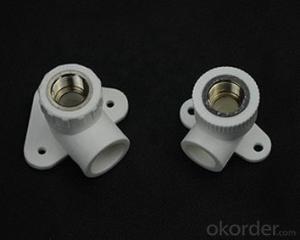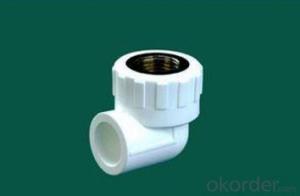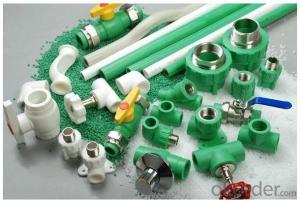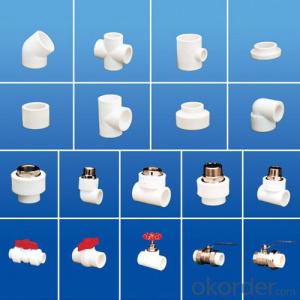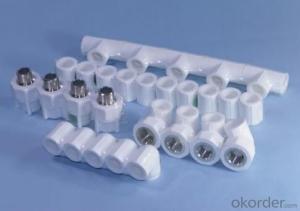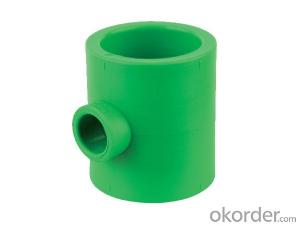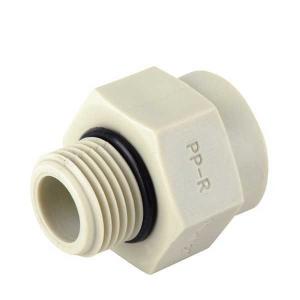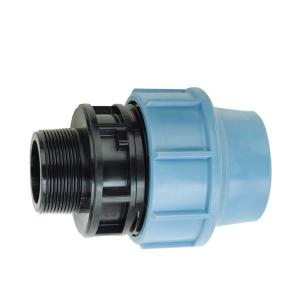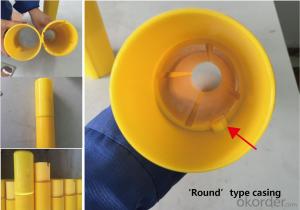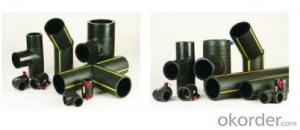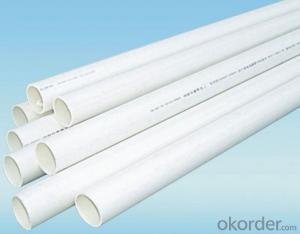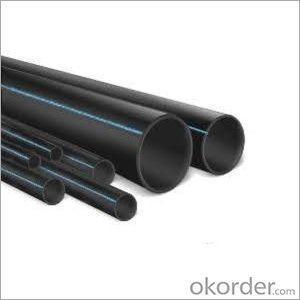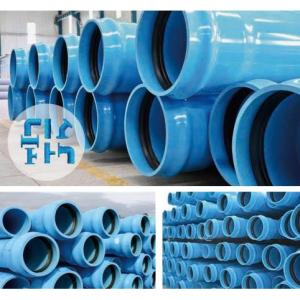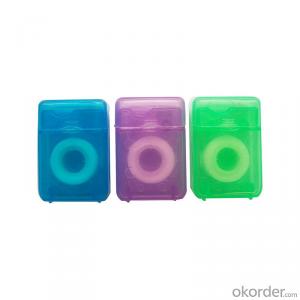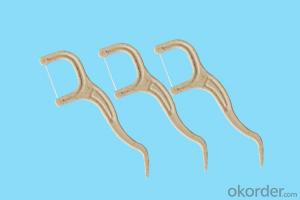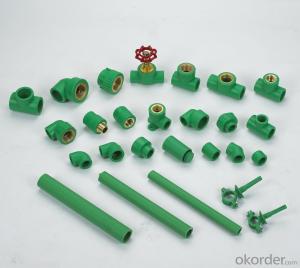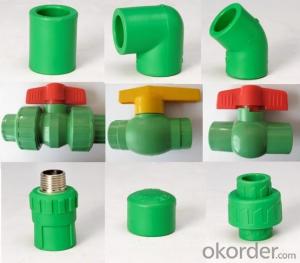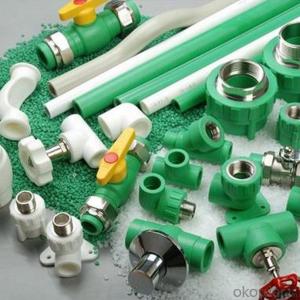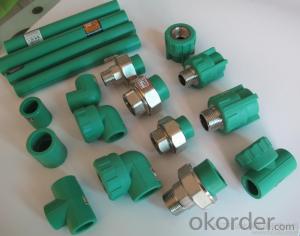2018 PPR Elbows Fittings Used in Industrial Fields
- Loading Port:
- Tianjin
- Payment Terms:
- TT OR LC
- Min Order Qty:
- 1000 pc
- Supply Capability:
- 100000 pc/month
OKorder Service Pledge
OKorder Financial Service
You Might Also Like
Product Overview
PP-R (polypropylene random) tube called type three polypropylene pipe and is also called the PP-R pipe or PPR pipe, with energy saving, environmental protection, high strength, corrosion resistance, with smooth inner wall has the advantages of scale, construction and easy maintenance, long service life, widely used in building water supply and drainage, urban drainage city gas and power cable sheath, and industrial fluid transportation, agricultural irrigation construction, municipal, industrial and agricultural fields. The PP-R pipe is made of random copolymerized polypropylene and is extruded into tubes to be molded into tubes.
Feature
1) The professional factory of fittings.
2) The important manufacture of fittings in china.
3) High quality and better price.
4) Convenient One touch fittings provide instant tubing connections.
5) Elliptical release ring help to connect the tube easily by manual, no special tools required.
Advantages:
1. Greatly reduced linear expansion coefficient, only 1/4 of that of PPR.
2. 100% oxygen tightness, suitable for heating systerm.
3. Improved resistant to impulse under low temperature, resistant to UV-rays.
4. Easily detected by detector when embedded, owing to the metal layer.
Product Description
Pressure | Size(mm) | Pressure | Size(mm) |
PN1.25MPA | 20*2.0 |
PN1.6MPA | 20*2.3 |
25*2.3 | 25*2.8 | ||
32*2.9 | 32*3.6 | ||
40*3.7 | 40*4.5 | ||
50*4.6 | 50*5.6 | ||
63*5.8 | 63*7.1 | ||
75*6.8 | 75*8.4 | ||
90*8.2 | 90*10.1 | ||
110*10.0 | 110*12.3 |
Product Show

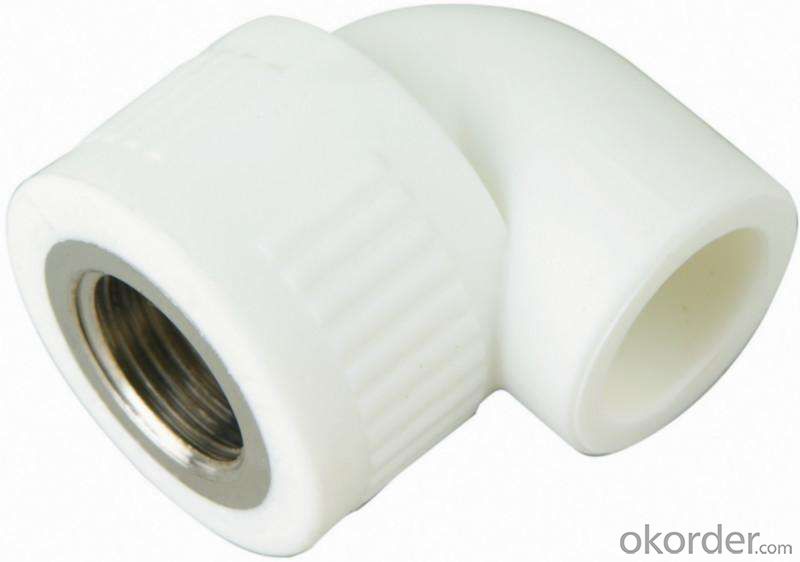
FAQ
Q1: How Can I Get A Sample?
A1: You can get samples by communicate with our export sales.
Q2: How Long Is Delivery?
A2: Delivery time will be30-45days according to order quantity.
Q3: What Is The MOQ?
A3: MOQ depends on different items.
Q4: What Is Our Normal Payments Terms?
A4: Our normal payment terms now is: T/T, L/C or western union, pay
- Q:Do plastic pipe fittings require any special tools for removal?
- Yes, plastic pipe fittings often require special tools for removal. The most common tool used is a pipe wrench or pliers specifically designed for plastic fittings. Additionally, some fittings may require the use of heat or solvent-based products to loosen the joints before removal.
- Q:Can plastic pipe fittings be used for HVAC systems?
- Yes, plastic pipe fittings can be used for HVAC systems. Plastic pipe fittings are commonly used in HVAC systems due to their durability, resistance to corrosion, and ease of installation. They are often made from materials such as PVC, CPVC, or PEX, which are suitable for carrying both hot and cold water in HVAC applications. Plastic pipe fittings are also cost-effective, making them a popular choice for HVAC installations.
- Q:Are plastic pipe fittings resistant to clogging and scaling?
- Yes, plastic pipe fittings are generally resistant to clogging and scaling. The smooth interior surface of plastic pipes reduces the chances of debris buildup and scaling, ensuring uninterrupted flow and efficient plumbing systems. However, it is important to note that regular maintenance and proper installation are still necessary to prevent potential issues.
- Q:How do you connect plastic pipe fittings to galvanized iron pipes?
- To connect plastic pipe fittings to galvanized iron pipes, you can use a transition fitting specifically designed for this purpose. These fittings have a threaded end that can be screwed onto the galvanized iron pipe, while the other end is designed to connect to the plastic pipe fitting using solvent cement or a compression fitting. This allows for a secure and leak-free connection between the two different types of pipes.
- Q:Can plastic pipe fittings be used in wastewater systems?
- Yes, plastic pipe fittings can be used in wastewater systems. Plastic fittings are commonly used in wastewater systems due to their durability, resistance to corrosion, and affordability. They are capable of withstanding the harsh chemicals and high temperatures often present in wastewater systems. Additionally, plastic fittings are easy to install and require minimal maintenance, making them a popular choice for wastewater applications.
- Q:Are plastic pipe fittings compatible with threaded connections?
- Yes, plastic pipe fittings can be compatible with threaded connections. Many plastic fittings are designed with threaded ends to allow for easy installation and connection to other pipes or fixtures. However, it is important to ensure that the plastic fittings and the threaded connections are compatible in terms of size and material to ensure a secure and leak-free connection.
- Q:How do you measure plastic pipe fittings?
- To measure plastic pipe fittings, you typically need to measure the diameter and length of the fitting. For the diameter, you can use a caliper or a tape measure to determine the outer diameter of the fitting. To measure the length, you can use a ruler or a measuring tape to measure the distance between the two ends of the fitting.
- Q:Do plastic pipe fittings require any special tools for installation?
- Yes, plastic pipe fittings typically require special tools for installation. These tools may include pipe cutters, reamers, deburring tools, primer, and solvent cement.
- Q:What are the common installation mistakes to avoid with plastic pipe fittings?
- Some common installation mistakes to avoid with plastic pipe fittings include overtightening the fittings, not using the correct type of pipe for the specific application, not properly preparing the pipe ends before installation, and not using the appropriate solvent or adhesive for joining the fittings. It is also important to avoid using excessive force when connecting or disconnecting the fittings, as this can cause damage or leaks.
- Q:Are plastic pipe fittings suitable for all types of pipes?
- No, plastic pipe fittings are not suitable for all types of pipes. Different types of pipes, such as copper, PVC, or steel, may require specific fittings designed for their material and connection method. It is important to ensure compatibility and use the appropriate fittings for each pipe type to ensure a secure and leak-free connection.
1. Manufacturer Overview |
|
|---|---|
| Location | |
| Year Established | |
| Annual Output Value | |
| Main Markets | |
| Company Certifications | |
2. Manufacturer Certificates |
|
|---|---|
| a) Certification Name | |
| Range | |
| Reference | |
| Validity Period | |
3. Manufacturer Capability |
|
|---|---|
| a)Trade Capacity | |
| Nearest Port | |
| Export Percentage | |
| No.of Employees in Trade Department | |
| Language Spoken: | |
| b)Factory Information | |
| Factory Size: | |
| No. of Production Lines | |
| Contract Manufacturing | |
| Product Price Range | |
Send your message to us
2018 PPR Elbows Fittings Used in Industrial Fields
- Loading Port:
- Tianjin
- Payment Terms:
- TT OR LC
- Min Order Qty:
- 1000 pc
- Supply Capability:
- 100000 pc/month
OKorder Service Pledge
OKorder Financial Service
Similar products
New products
Hot products
Related keywords
